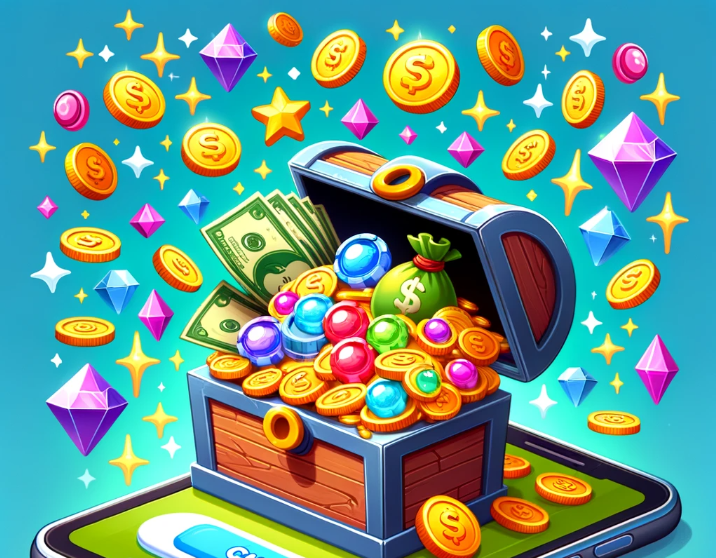Introduction
In the vibrant world of indie game development, creating a game that captivates and excites players is only half the battle. The other half, equally challenging and crucial, is monetisation. For indie developers, the art of monetisation is a delicate dance of strategy and player psychology, where the ultimate goal is to achieve sustainability and profitability without compromising the gaming experience.
The landscape of game monetisation is a complex one, fraught with questions about ethics, effectiveness, and engagement. How do you ensure that your monetisation tactics are not just profitable, but also fair and enjoyable for your players? How do you keep the lights on and your creative dreams alive without succumbing to the pitfalls of aggressive monetisation?
This article is designed to be your compass in the intricate world of game revenue. We will delve into actionable strategies that can help indie developers like you not only survive but thrive in a market that is as competitive as it is passionate. From understanding your audience to choosing the right monetisation model, implementing in-app purchases, and leveraging analytics for optimization, we will explore how you can maximise your game’s earning potential while maintaining the integrity of the player experience.
Understanding Your Audience
Before diving into the mechanics of monetisation, it’s imperative to start with the foundation of any successful game; the players. Understanding your audience is the first step towards any monetisation strategy because, at the end of the day, these are the individuals who will decide whether or not to spend money on your game.
Know Your Players – The gaming industry is diverse, with players coming from all walks of life, each with different preferences and spending habits. Indie developers must invest time in understanding who their players are. This means going beyond basic demographics and delving into psychographics—players’ attitudes, interests, behaviours, and even their gaming motivations. Are they competitive, seeking to climb leaderboards? Do they value narrative and story over gameplay mechanics? Or are they casual players who enjoy the game in short bursts?
Gather and Analyse Player Data – Data is your ally in the quest to comprehend your audience. Utilise analytics tools to gather data on how players interact with your game. Track their progression, where they struggle, what features they engage with the most, and where they seem to get the most enjoyment. This data will not only inform your game design decisions but also highlight potential monetisation opportunities that align with your players’ behaviours.
Creating Player Personas – With a wealth of data at your fingertips, you can begin to create player personas. These are fictional characters that represent the different user types within your target demographic. For instance, “John the Achiever” might represent players who are motivated by in-game achievements and will likely spend money on features that showcase their status. On the other hand, “Sally the Explorer” might spend more on content that allows her to experience new stories or explore new worlds.
Why Personas Matter for Monetisation – Understanding these personas helps indie developers tailor their monetisation strategies to different segments of their audience. For example, offering cosmetic items might appeal to players who want to stand out, while providing a “fast pass” to certain game areas might attract those with less time to play. By aligning your monetisation strategies with the desires and motivations of your player personas, you can create a monetisation approach that feels natural and engaging, rather than intrusive or exploitative.
In conclusion, understanding your audience is not just about selling—it’s about creating a relationship with your players where monetisation becomes a part of the value you offer. By knowing who your players are and what they want, you can design monetisation strategies that resonate with them, ensuring that when they do make a purchase, it enhances their gaming experience and deepens their connection to your game.
Choosing the Right Monetisation Model
Once you have a deeper understanding of your audience, the next crucial step is to select a monetisation model that aligns with both your game’s design and your players’ expectations. The right model can enhance the gaming experience and ensure a steady revenue stream, while the wrong choice can be off-putting and drive players away. Let’s explore the most common monetisation models along with their pros & cons.
Freemium Model
The freemium model offers the core game for free while charging for advanced features, functionalities, or virtual goods. This model can attract a large user base, but it requires a delicate balance to ensure that paying players don’t gain an unfair competitive advantage, commonly referred to as “pay-to-win.”
Pros |
|
|
Cons |
|
|
In-App Purchases (IAP)
Closely related to the freemium model, IAP allows players to buy virtual goods or benefits directly within the game. These can range from cosmetic items, like character skins, to functional items that change gameplay.
Pros |
|
|
Cons |
|
|
Ads-Based Model
This model incorporates advertisements into the game, providing revenue each time an ad is displayed or clicked. Ads can be in the form of banners, interstitials, or rewarded videos.
Pros |
|
|
Cons |
|
|
Premium Model
The premium model is the traditional approach where players pay upfront to download and play your game. This model can be beneficial for games with rich narratives or unique gameplay mechanics.
Pros |
|
|
Cons |
|
|
Subscription Model
Subscriptions provide players with access to the game or additional content for a recurring fee. This model can create a steady revenue stream and is often paired with exclusive content or features.
Pros |
|
|
Cons |
|
|
Hybrid Models
Many successful games blend elements from different monetisation models. For example, a game might be free to download (freemium), offer in-app purchases, and display ads. The key is finding the right balance that suits your game and audience.
Pros |
|
|
Cons |
|
|
Tips for Selecting the Best Model for Your Game:
- Align with Player Expectations: Choose a model that fits naturally with how your players want to engage with your game.
- Test and Iterate: Don’t be afraid to test different models or a combination of them to see what resonates with your audience.
- Keep the Balance: Ensure that monetisation doesn’t interfere with gameplay and that players who don’t pay can still enjoy a full gaming experience.
- Be Transparent: Whatever model you choose, be clear with your players about how the game is monetised.
In summary, selecting the right monetisation model is a strategic decision that should be made with your audience in mind. By considering the pros and cons of each model and how they align with your player personas, you can choose a monetisation strategy that feels like a natural extension of the gaming experience, rather than an interruption.
Implementing In-App Purchases Wisely
In-app purchases (IAP) can be a significant revenue stream for indie developers, but they must be implemented thoughtfully to avoid disrupting the player experience. When done right, IAP can enhance the game, providing players with options to customise their experience or enjoy the game in new ways. Here’s how to approach IAP with wisdom and balance.
Strategize Your Offerings – First, consider what you’re selling. Items should feel like a natural part of the game and offer genuine value. Cosmetic items, such as skins or character customizations, can be popular as they don’t directly affect gameplay. On the other hand, functional items, like power-ups or exclusive content, should be handled carefully to avoid unbalancing the game.
Price Points and Value Perception – Setting the right price for your in-app purchases is crucial. If the price is too high, players may feel ripped off; too low, and you might undervalue your game. Conduct market research to understand what players are willing to pay for similar items in other games. Also, consider offering a range of price points to cater to different spending thresholds.
Ethical Considerations – It’s essential to approach IAP ethically. Avoid pay-to-win scenarios where players can buy their way to success, overshadowing skill and effort. Instead, focus on items that enhance the experience rather than dictate it. Transparency is key—players should know what they’re buying and how it will affect their gameplay.
Seamless Integration – The way IAP is presented in the game can make a big difference. Purchasable items should be integrated seamlessly into the game environment. They should feel like a part of the game’s world, not an afterthought or a break from the narrative and gameplay.
Examples of Successful IAP Implementations
- Cosmetic Enhancements: Offer players a way to express their individuality without affecting gameplay, like custom avatars or unique item skins.
- Time-Savers: For players who wish to progress faster, offer time-saving options that are balanced and fair.
- Exclusive Content: Provide access to special levels or unique storylines that offer new experiences without making the base game feel incomplete.
Avoiding Common Pitfalls
- Overemphasis on IAP: Ensure that the core gameplay is not overshadowed by constant prompts to make purchases.
- Neglecting Non-Paying Players: Remember that players who don’t purchase still contribute to the game’s ecosystem and should have a fulfilling experience.
- Obscuring Value: Be clear about what each purchase entails—players should never feel deceived about the utility or advantage of an item.
In-app purchases, when implemented with the player’s enjoyment in mind, can significantly enhance the gaming experience and boost your revenue. By offering fair, transparent, and valuable purchase options, you respect your players and encourage a healthy game economy. Remember, the goal is to create a win-win situation where players feel good about their purchases, and you sustain your game’s development and growth.
Advertising Without Annoying Your Players
Advertising is a tried and tested Monetisation strategy for many indie developers. However, it’s a double-edged sword: while it can provide a steady revenue stream, it can also interrupt gameplay and annoy players if not integrated thoughtfully. Here’s how to incorporate ads into your game in a way that respects your players and enhances their experience.
Choosing the Right Ad Formats
Different ad formats can offer various levels of engagement and interruption. Here are a few to consider:
- Rewarded Video Ads: These ads offer players a choice to watch in exchange for in-game rewards. They are less intrusive as they are opt-in and provide value to the player.
- Interstitial Ads: Full-screen ads that appear at natural transition points in the game, such as between levels. They should be used sparingly to minimise disruption.
- Banner Ads: Small ads that appear within the game’s interface. They’re less intrusive but can be ignored easily, potentially reducing their effectiveness.
Balancing Ad Frequency and Timing – The frequency and timing of ads are critical factors in maintaining a positive player experience. Ads should be spaced out enough to avoid bombarding the player but frequent enough to generate revenue. Timing them to appear at natural stopping points in the game can minimise disruption.
Targeting and Relevance – Ads that are relevant to your audience are more likely to be well-received. Use targeting options to serve ads that match your players’ interests. This not only improves the player experience but can also increase ad engagement and revenue.
Transparency and Control – Be transparent with your players about the role of ads in supporting the game. Offer options for players to control their ad experience, such as ad-free versions of the game or in-app purchases that remove ads. This empowers players and can improve their perception of your game.
Testing and Optimization – Monitor how different ad strategies affect player behaviour and retention. A/B testing can be invaluable in finding the sweet spot for ad frequency and format. Pay attention to player feedback and be willing to adjust your approach accordingly.
Best Practices for Ad Integration
- Natural Integration: Integrate ads in a way that feels like a part of the game’s world, not an interruption.
- Player Choice: Whenever possible, give players the choice to engage with ads and reward them for doing so.
- Quality Over Quantity: It’s better to have fewer, higher-quality ads than a barrage of low-quality ones.
- Respect Privacy: Ensure that your ad providers comply with privacy laws and that player data is handled responsibly.
Ads don’t have to be a necessary evil. When implemented with care and consideration for the player experience, they can be a legitimate part of your game’s ecosystem. By choosing the right formats, balancing frequency, ensuring relevance, and offering transparency and control, you can create an ad strategy that supports your game financially without compromising the enjoyment of your players.
Enhancing Game Value with Additional Content
For indie developers, creating additional content such as downloadable content (DLC), expansions, or seasonal updates can be a powerful way to enhance game value and drive Monetisation. This strategy not only provides players with fresh experiences but also revitalises interest in the game over time. Here’s how to approach the creation and Monetisation of additional content effectively.
Planning Additional Content
Before developing additional content, it’s important to plan content that aligns with your game’s core experience and the interests of your audience. Consider the following:
- Story Extensions: If your game has a narrative component, additional chapters or storylines can offer more of what players love.
- New Features: Introduce new gameplay mechanics or features that complement the base game and offer new challenges.
- Cosmetic Additions: Provide new skins, costumes, or aesthetic items that allow players to customise their experience.
Timing the Release – The timing of additional content releases can significantly impact their success. Release too soon, and you risk overwhelming players or giving the impression that the base game is incomplete. Wait too long, and players may have moved on. Aim for a sweet spot where players are still engaged and hungry for more.
Pricing Strategies – When pricing your additional content, consider the perceived value it offers. Content that significantly expands the game’s world or adds many hours of gameplay can command a higher price. Smaller cosmetic items should be priced accordingly. Always aim for a price that feels fair and adds perceived value to the overall game experience.
Communicating Value to Players
Make sure players understand the value of the additional content. This can be done through:
- Transparent Descriptions: Clearly communicate what the content includes and how it enhances the game.
- Previews and Teasers: Use trailers, screenshots, or demos to showcase the content and generate excitement.
- Player Testimonials: Share reviews or testimonials from players who have enjoyed the content.
Leveraging Community Feedback – Engage with your community to understand what kind of additional content they would like to see. This not only ensures that you’re creating content that players want but also helps build anticipation and a sense of ownership among your player base.
Monetisation Models for Additional Content
- One-Time Purchase: Offer your additional content for a single purchase price, ensuring access to all included features.
- Season Passes: Provide a bundle of content at a discounted rate, available over a specific period.
- Subscription Access: Integrate the content as part of a subscription model, offering it alongside other perks.
Ethical Considerations
When offering additional content, it’s crucial to maintain ethical practices:
- Avoid Fragmenting the Player Base: Ensure that multiplayer games don’t segregate players based on who has purchased additional content.
- No Pay-to-Win: Additional content should not give buyers an unfair advantage in competitive play.
- Full Disclosure: Be upfront about what is included in the content package to avoid misleading players.
Additional content can significantly enhance the longevity and profitability of your game. By carefully planning, timing, and pricing your content—and communicating its value effectively—you can provide players with enriching experiences that justify their investment. Remember, the goal is to supplement the core game with more of what players love, not to replace what should have been there from the start.
Leveraging Analytics for Monetisation Optimisation
In the data-driven world of game development, analytics play a pivotal role in understanding how players interact with your game and how you can optimise Monetisation strategies accordingly. By analysing player behaviour, purchase patterns, and engagement metrics, you can make informed decisions that boost your game’s financial success without compromising the gaming experience. Here’s how to leverage analytics for Monetisation optimization:
Understanding Key Metrics
To optimise Monetisation, you must first understand the key metrics that drive revenue. These include:
- Average Revenue Per User (ARPU): Measures the average income generated per player.
- Conversion Rate: The percentage of players who make a purchase.
- Customer Lifetime Value (CLV): Predicts the net profit attributed to the entire future relationship with a player.
- Retention Rate: The percentage of players who return to the game after their first session.
Collecting and Segmenting Data – Collect data at various stages of gameplay to understand where players are most engaged and where they drop off. Segment this data by player behaviour, demographics, and purchase history to identify patterns and trends. This segmentation can help tailor your Monetisation strategies to different player groups.
Identifying Monetisation Opportunities
Use analytics to pinpoint where players are most likely to make purchases. Look for:
- High Engagement Points: Times when players are most immersed in the game and may be more inclined to spend money.
- Bottlenecks and Frustration Points: Areas where players struggle and might be willing to pay for solutions.
- Popular Items: Items or features that are most used or desired by players, which can inform the development of new purchasable content.
Personalizing Offers – Analytics can help you personalise offers to individual players based on their behaviour and preferences. For example, if a player frequently uses a particular item, you might offer a discount on a related item. Personalization increases the relevance of offers, which can improve conversion rates.
Predictive Analytics – Advanced analytics can predict future player behaviour, allowing you to proactively adjust your Monetisation strategies. By understanding which players are likely to churn, you can implement retention strategies or offer incentives to keep them engaged.
Ethical Use of Data – Always use player data responsibly. Be transparent about data collection, adhere to privacy laws, and ensure that players’ information is secure. Ethical data practices build trust and can even become a selling point for your game.
Analytics are not just numbers; they tell the story of how players interact with your game. By understanding and responding to these insights, you can create Monetisation strategies that are player-friendly and revenue-generating. Remember, the goal is to enhance the player experience with Monetisation, not detract from it. With the right analytics approach, you can find a harmonious balance that benefits both your players and your bottom line.
Testing and Iterating Your Monetisation Strategies
The gaming market is dynamic, and what works today may not work tomorrow. This is why testing and iterating your Monetisation strategies is crucial. It ensures that your approaches stay relevant and effective in engaging players and driving revenue. Here’s how to refine your Monetisation tactics through continuous testing and iteration.
The Importance of A/B Testing
A/B testing, also known as split testing, is a method of comparing two versions of a web page or app against each other to determine which one performs better. In the context of game Monetisation, this could mean testing different pricing, ad placements, in-app purchase bundles, or even the timing of offers.
- Set Clear Objectives: Before you begin testing, know what you want to achieve. Is it higher ARPU, better conversion rates, or increased retention?
- Test One Variable at a Time: To accurately measure the impact of changes, only test one variable at a time.
- Use a Significant Sample Size: Ensure that your test results are statistically significant by using a large enough sample of your player base.
Analysing Test Results
After running an A/B test, analyse the data to see which version achieved the objective more effectively. Look beyond just the immediate revenue; consider the impact on player retention and satisfaction as well.
- Measure Long-Term Effects: Some changes may increase short-term revenue but could harm player retention in the long run.
- Gather Player Feedback: Combine quantitative data with qualitative feedback to understand why one option outperformed the other.
Iterating Based on Feedback
Use the insights gained from A/B testing and player feedback to iterate on your Monetisation strategies.
- Implement Gradual Changes: Based on test results, implement changes gradually to avoid disrupting the player experience.
- Monitor Impact Over Time: Keep an eye on the long-term effects of your changes to ensure they continue to perform well.
- Be Prepared to Pivot: If data shows that a new strategy isn’t working, be ready to revert to previous methods or try something new.
Continuous Improvement Cycle
Treat Monetisation as a continuous improvement cycle. Regularly revisit your strategies to refine and adapt them to changing player behaviours and market trends.
- Stay Informed on Industry Trends: Keep up with the latest trends in game Monetisation to inform your testing strategies.
- Encourage Ongoing Team Learning: Foster a culture of learning within your team so that everyone stays agile and informed about best practices in Monetisation.
Monetisation is not a ‘set it and forget it’ aspect of game development. It requires ongoing attention and refinement. By embracing a cycle of testing, analysing, and iterating, you can ensure that your Monetisation strategies remain effective and aligned with your players’ expectations. This approach not only helps to maximise revenue but also contributes to a better gaming experience, fostering a loyal and satisfied player base.
Closing Thoughts
Monetisation is a multifaceted endeavour in the world of indie game development. It’s not just about generating revenue; it’s about creating a sustainable business model that aligns with the player experience and community values. Throughout this article, we’ve explored various strategies that can help indie developers maximise their game’s profitability while maintaining the delicate balance between financial success and player satisfaction.
From understanding your audience and selecting the right Monetisation model to implementing in-app purchases and ads with finesse, the key is to approach Monetisation as an integral part of the game design—not an afterthought. By enhancing game value with additional content, leveraging analytics for optimization, engaging with the community, and continuously testing and iterating your strategies, you can create a Monetisation system that players respect and engage with.
Remember, the ultimate goal is to foster a harmonious relationship where players feel their investments are worthwhile, and developers can continue to thrive and innovate. As you apply these strategies, keep the lines of communication open with your players, remain transparent about your Monetisation tactics, and always prioritise the gaming experience.
In the end, successful Monetisation is about understanding that your players are the heart of your game. By respecting them, listening to them, and valuing their feedback, you not only enhance your game’s Monetisation potential but also build a loyal community that will support your endeavours for years to come.
As you move forward, consider each strategy not as a definitive answer but as a starting point for finding what works best for your game and your audience. With creativity, empathy, and a data-driven approach, your indie game can achieve both critical acclaim and financial success.
Thank you for taking the time to read our article. At Swayven Digital, we help game studios & publishers boost their profitability by refining their analytics & optimisation strategies. If you’d like to learn more about our services and how we could assist you, please don’t hesitate to get in touch with us.
Stay tuned for more insights, and until next time, keep optimising!




